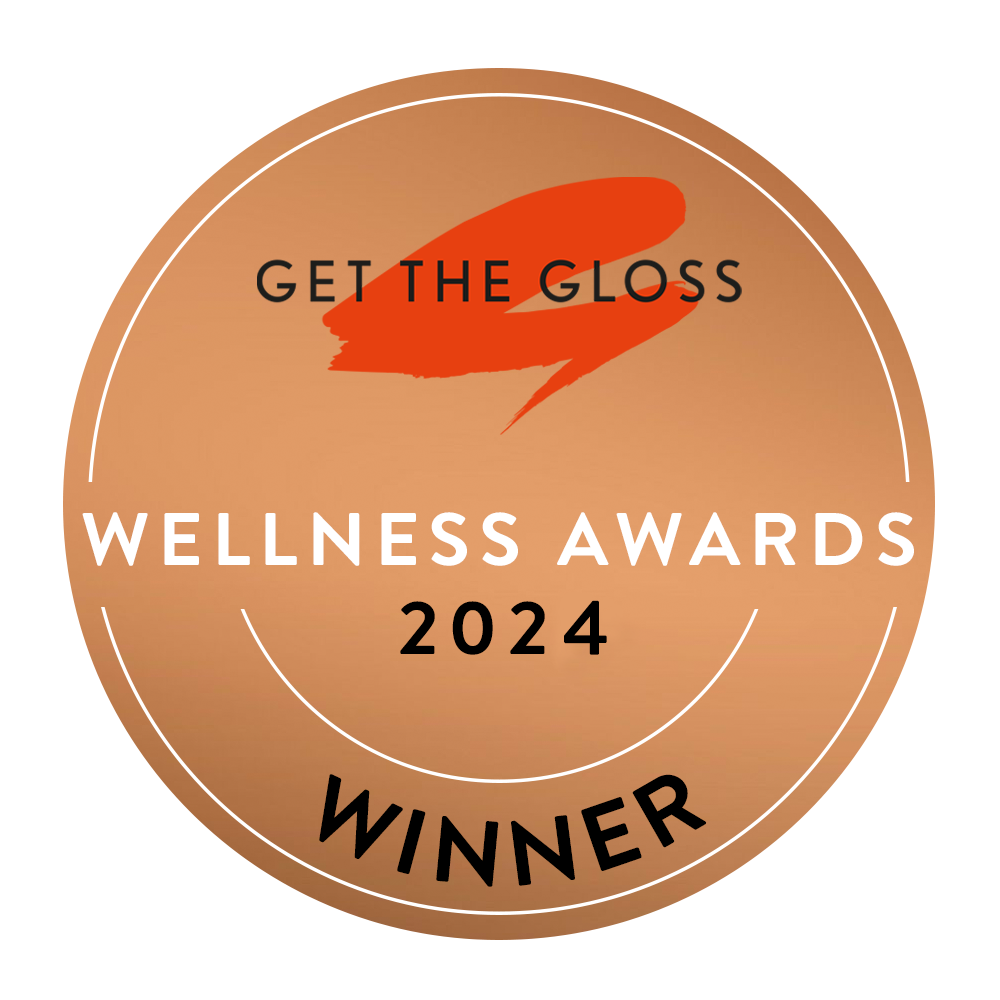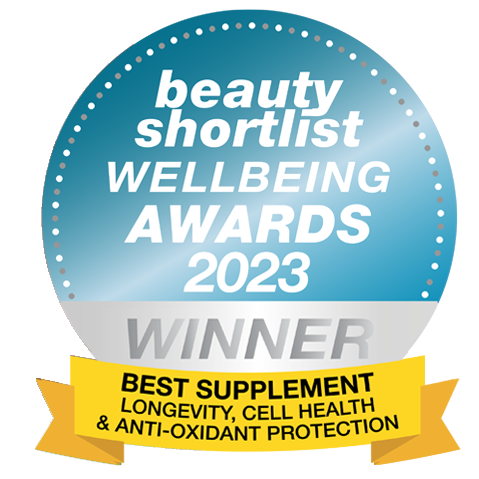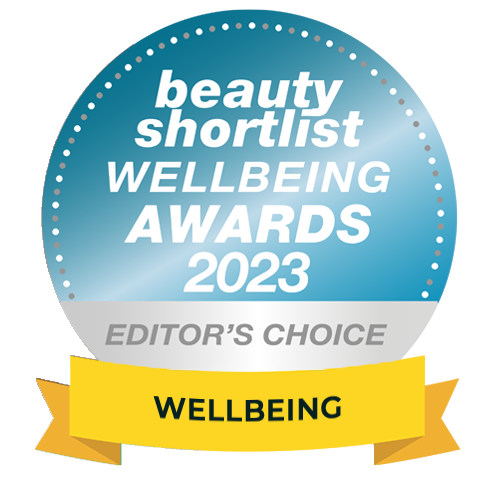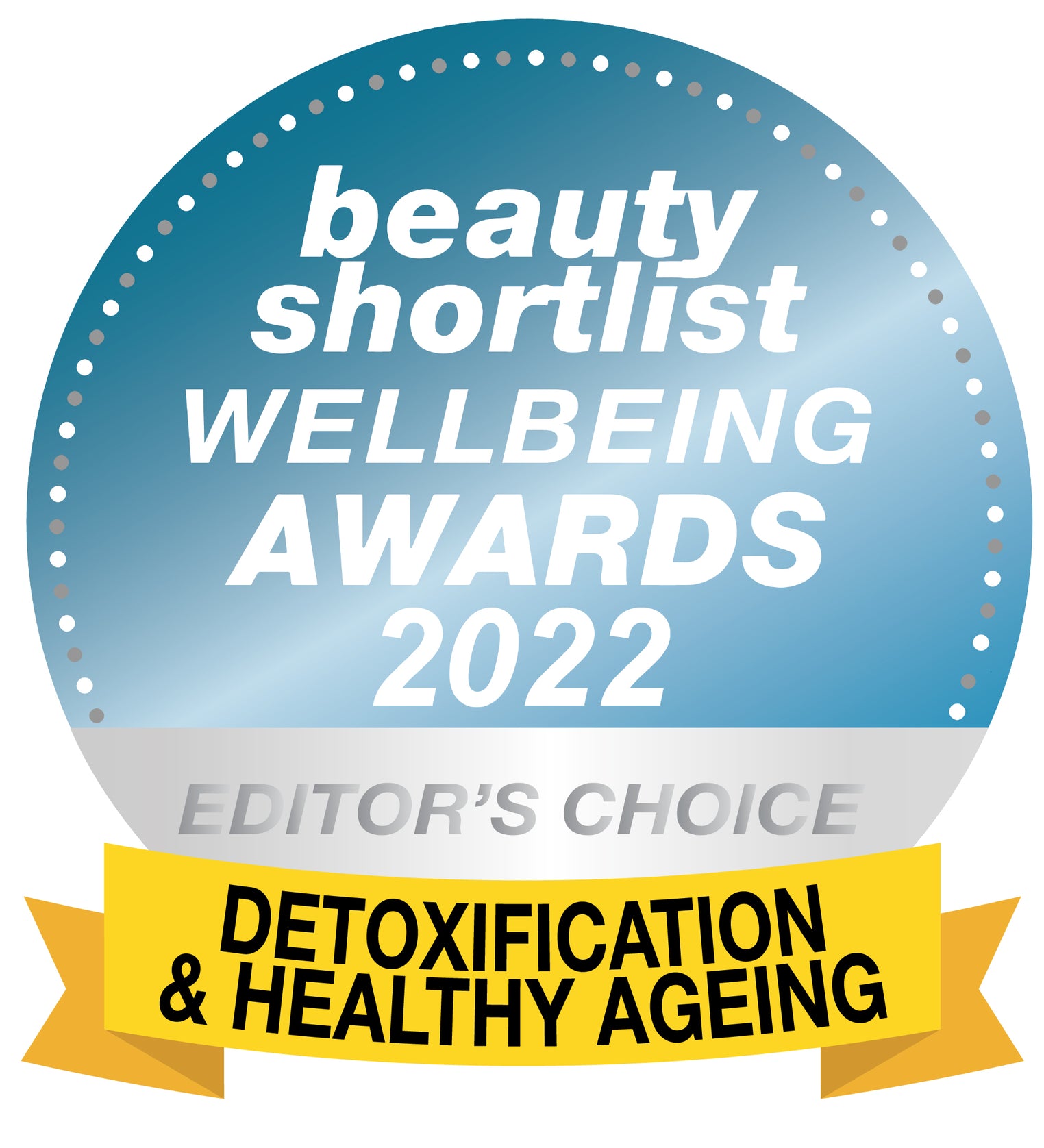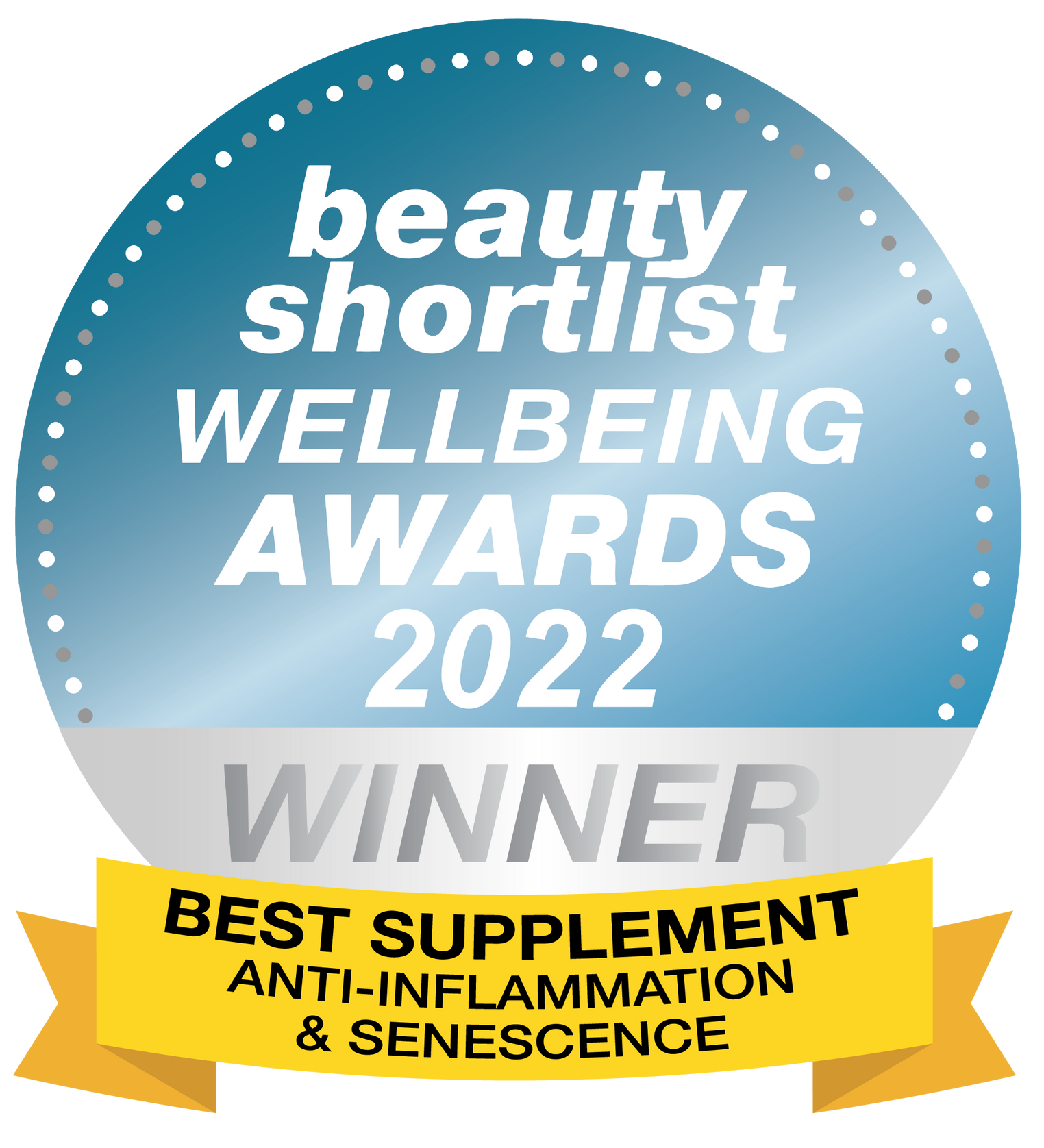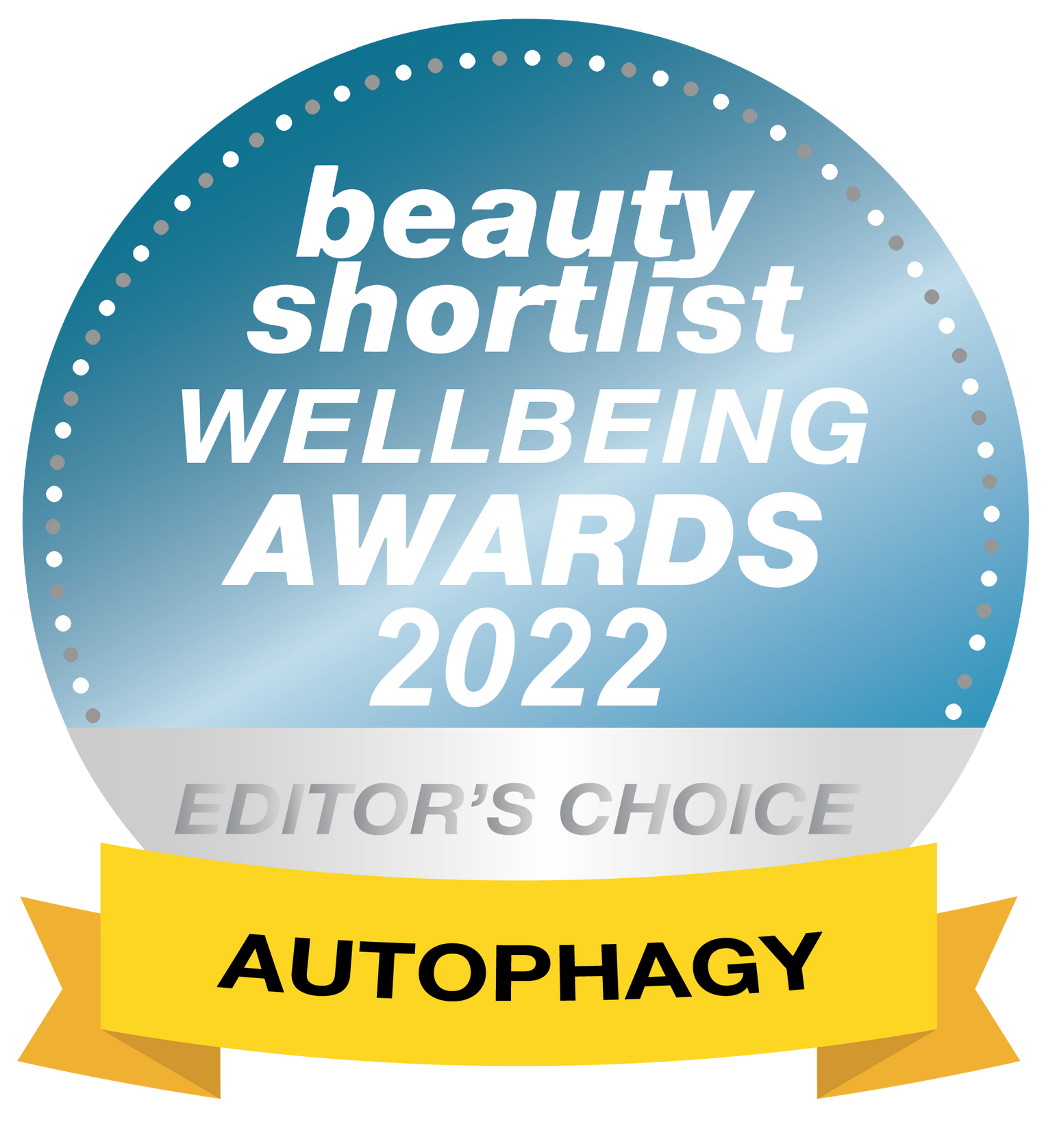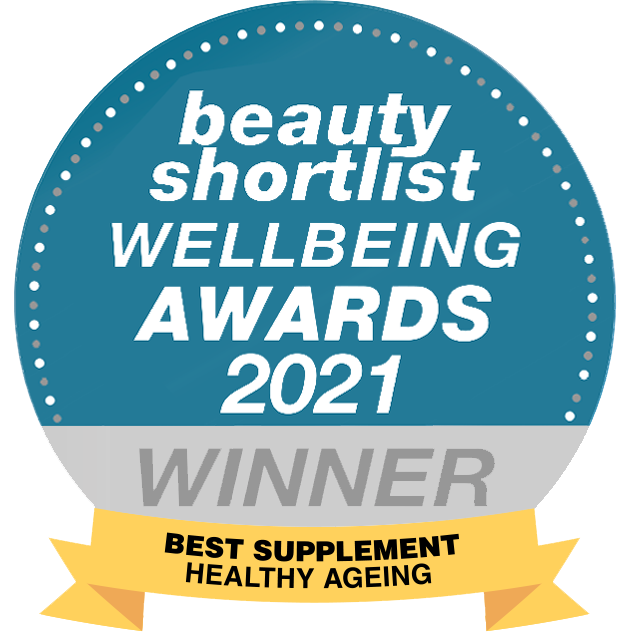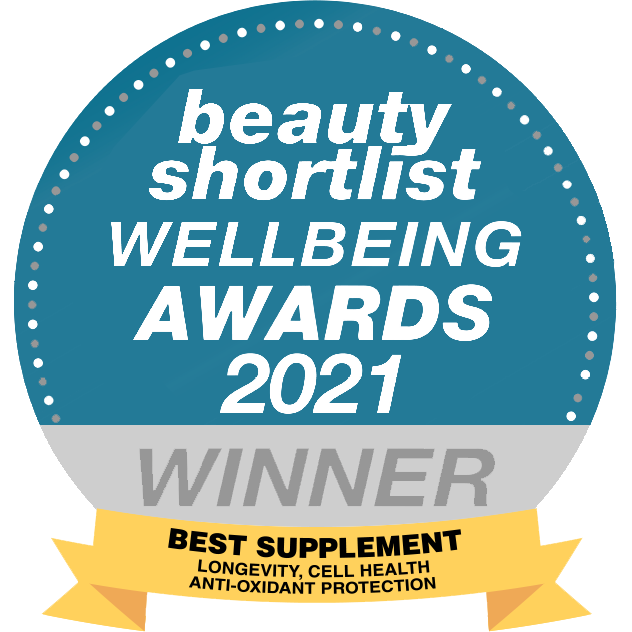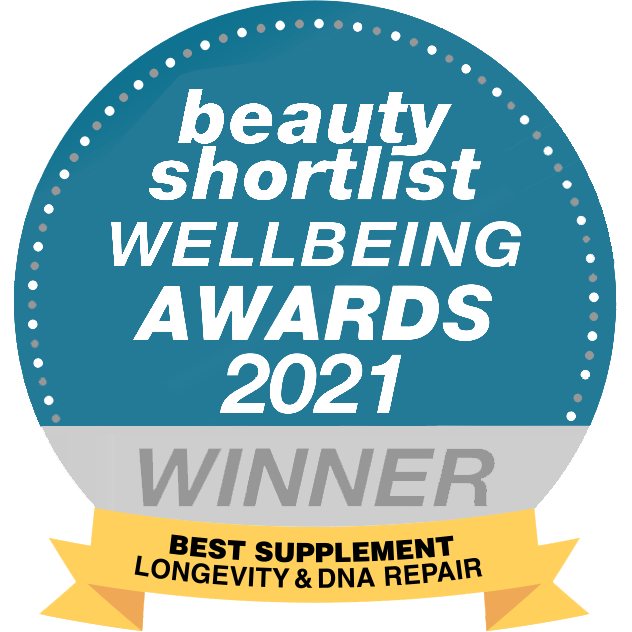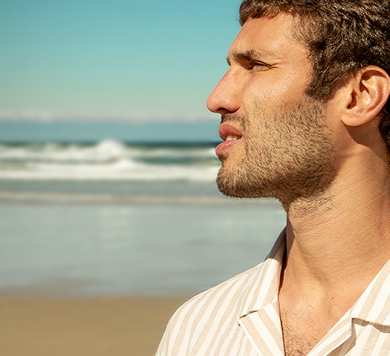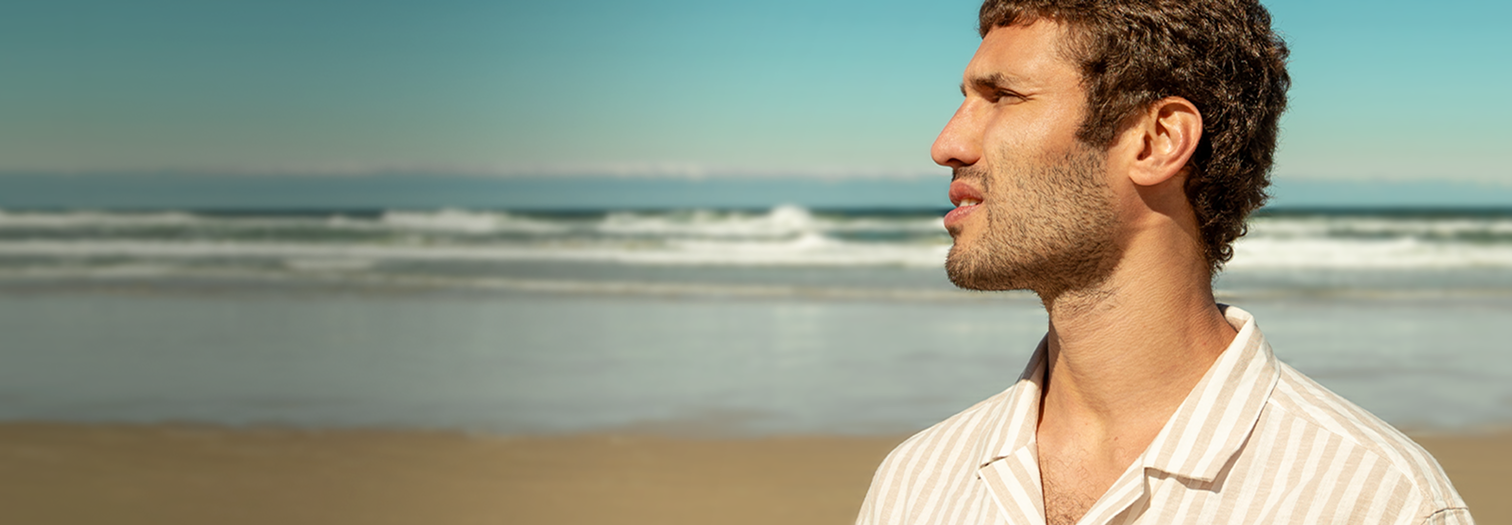Did you know that you can hack aging? In non-technological terms, a hack is a shortcut, a quick solution, or even a workaround to what’s considered to be the “normal” way of doing something. Anti-aging hacks are ways to prevent, slow down and maybe even reverse the deterioration that we usually associate with age so that we can regain and maintain our strength and vitality.
What are anti-aging tips?
In a nutshell, anti-aging hacks are things you can do to slow down or even prevent the progression of age-related conditions. If you do a search on anti-aging hacks or tips, you’ll find thousands of results with everything from using onions to treat grey hair to the latest injection to smooth out wrinkles. Some of these hacks will work and others might provide a temporary external improvement but won’t keep back the hands of time for long. With so much information out there, it can be difficult to know where to begin to hack aging.
At Youth & Earth, we believe that addressing the cause of aging at a cellular level is one of the best ways. Science has proposed that there are four pathways that can influence longevity: AMPK, SIRT, MTOR, and Nf-KB. And, targeting these pathways can potentially address the cellular causes of aging that will not only help you look younger but also feel younger. When choosing an anti-aging hack, look for those that will influence one of these pathways so that you know that you’re addressing the potential causes of aging at a deeper cellular level.
In this article, we’ve covered 5 easy anti-aging hacks that are simple, can be started at any time, and best of all, don’t cost a thing. The only thing you need to accompany it is a positive attitude to live life to the full and take an active role in improving your health.
For more on the longevity pathways, read The Longevity Pathways - How to Live a Happy, Healthy and Long Life.
Anti-Aging Hack #1: Cold-Water Immersion and Sauna Heat Therapy
Hot and cold stress (or therapy) is an anti-aging hack that reaps the therapeutic benefits of exposing your body to extreme temperatures, in a bid to improve mitochondrial health. Cold-water therapy can be done easily from a cold shower to ice baths and cryotherapy (that involves exposure to -100-250℃ in a controlled environment). On the other hand, heat therapy involves exposure to temperatures ranging from 70-100℃ via sauna and even hot showers on a small scale.
What are anti-aging benefits of cold-water therapy?
We’ve all seen photographs of people plunging into cold oceans and lakes. Apart from the thrill of doing something that’s challenging and adventurous, there are also some solid health benefits to this practice. Here are just a few of them to get you motivated to take the plunge.
It activates AMPK which regulates metabolism and may help with weight loss
Coldwater therapy (whether it’s taking an ice bath or swimming in winter) activates AMPK (the metabolism “Master Switch” ) that regulates the way our bodies use energy. This includes using stored fat for energy, reducing blood sugar levels, increasing the number of mitochondria (the energy producers in cells), and decreasing inflammation. It also activates good brown fat cells that keep us warm and also helps burn up white fat that’s bad for us and is caused by eating too much.
Cold-water therapy decreases inflammation and post-exercise muscle soreness
In recent years, we’ve seen more images and videos of athletes sitting in ice baths. The reason for this is that cold water has been shown to reduce the severity of Delayed Onset of Muscle Soreness (DOMS). If you’ve had a physically strenuous day or started a new exercise program, try cold water immersion. A systematic review was conducted from the Cochrane library by three authors to determine the effect of cold water immersion (CWI) in reducing muscle soreness after exercise. Seventeen small trials and nineteen studies were analyzed. The authors concluded that there is some evidence that CWI had therapeutic benefits in reducing delayed onset muscle soreness, compared to no intervention or rest in managing muscle soreness.
Improves blood circulation and lymphatic drainage
Have you ever noticed that your body turns pink when cold? This is because cold stimulates blood flow. When the body gets cold, blood vessels are restricted and blood is shunted to the vital organs. As a result, the heart has to work a bit harder to circulate blood throughout the body to warm you up and shunt oxygen and nutrients to all your cells.
The lymphatic system plays a critical role in removing waste and toxins from your body. An accumulation of toxins can cause cellular damage, inflammation, and premature aging. Coldwater also causes the lymphatic vessels to contract which helps flush waste out of the muscles and tissues.
Did you know that glutathione is the “master detoxifier”? Find out more in What is Glutathione and Why Is It Anti-Aging?
Cold-water boosts mood and may help depression
Plunging into cold water can also help your mood because it releases endorphins and noradrenaline that make you feel happy and alive. In 2007, researchers found that cold showers helped alleviate the symptoms of depression even in those who were not diagnosed with depression. If you’re feeling down, try having a swim in the cold ocean or even a short cold shower. Apart from all the physiological benefits, you’ll also experience the psychological benefits of taking on a challenge. For more the health benefits of cold therapy, watch the video below from Growth Mindset.
What are the advantages of sauna heat therapy?
If you’ve ever been in a sauna, you’ll know how relaxing they can be, especially if you’ve been under large amounts of stress. The heat from the sauna improves circulation, eases pain, and can encourage the body to relax. It’s also been shown to improve cardiovascular health on a similar scale to a cardio workout and using a sauna regularly has been shown to influence longevity.
One study was done on over 2300 individuals aged 42-60 years to determine the effects of frequent sauna bathing on inhibiting fatal cardiovascular and all-cause mortality. The study showed that 4 - 7 sauna sessions weekly for about 11 minutes lowered all-cause mortality. Moreover, even 1 session a week had significant benefits in mitochondrial health and overall longevity. For more on the benefits of using a sauna regularly, watch this video from Jason Bracht.
How to use cold water and heat therapy in daily life
Before you start to implement any of these tips in your daily life, it’s important to check in with your health practitioner, especially if you suffer from a chronic health condition such as cardiovascular disease or high blood pressure. If you have the go-ahead, here are a few simple ways to reap the benefits of cold and heat.
-
One of the easiest ways is to end your hot shower with a cold water show of 30-90 seconds. Start with a 30-second burst and gradually work your way up to a long shower. Don’t forget to breathe!
-
If you’re feeling daring, add two bags of ice to your bathtub and immerse yourself in the cold water for a maximum of 10-15 minutes.
-
Climb into a cold swimming pool after a workout or take a weekend trip to a cold ocean or lake for a plunge. (Be sure to dress warmly afterward and pack in a flask of hot cocoa for additional endorphins!)
-
Have a weekly sauna session at your local health club or gym or invest in a home sauna or portable sauna suit.
Anti-Aging Hack #2: Calorie Restriction for Longer Lifespan
Did you know that the Okinawans (one of the Blue Zones) follow a principle called “Hara Hachi Bu.” This means that you eat until you’re 80% full. What does that mean? You eat until you’re no longer hungry, not full. Eating a calorie-restricted diet is possibly one of the factors that allow them to achieve such long and productive lives.
If you’re interested in learning more about the Blue Zones, read Lessons from the Blue Zones - Feel Younger for Longer
Apart from the fact that it reduces your chance of being overweight and developing chronic conditions like diabetes, it also activates and inhibits the longevity pathways.
What does calorie restriction mean?
Calorie restriction is a way to reduce your average daily calorie consumption (while avoiding malnutrition) so as to reap its claimed increased longevity benefit. It’s among an array of other dietary strategies like intermittent fasting and protein restriction that are aimed at improving the markers of aging.
Calorie restriction has been linked with curtailing illnesses such as cancer, diabetes, neural disorders, and cardiovascular diseases and has been shown to increase the lifespan of certain insects and animals.
In one of the most well-known studies, the Comprehensive Assessment of Long-Term Effects of Reducing Intake of Energy (CALERIE), 218 adults were divided into 2 groups, and one group had their calorie intake reduced by 25% over 2 years. Although the experimental group could not meet the target of 25% reduction, they did succeed in a 12% reduction (about 300 calories). The experimental group lost 10% of their weight over the duration of the study, and they had sustained the weight loss during a follow-up study 2 years later. It was also noted they had lowered risk factors for age-related illnesses like stroke, heart disease, and diabetes. Furthermore, the participants had no severe side effects and experienced a better quality of life, sleep, and mood.
In another 2-year study, participants on a calorie-restricted diet (who ate 15% lower calories than the rest) showed a reduction in oxidative stress by 20%. The restricted group also had a lower basal metabolic rate (by 10%) than the rest when sleeping.
How does calorie restriction promote longevity?
Calorie restriction has been shown to increase the lifespan of many animals in studies. This seems to indicate that it may also influence our longevity as humans. Apart from encouraging weight loss which will immediately benefit your health, it also seems to do the following:
It activates sirtuins (SIRT) - the longevity pathway that regulates cellular health
Sirtuins are critical proteins that regulate cellular health through a molecule called NAD+. They turn anti-aging genes on and off, regulate cellular death, repair DNA, and play a role in metabolism. One of the ways to activate this pathway is through calorie restriction.
For more on this anti-aging pathway, read How Sirtuins and NAD+ Influence Longevity.
It activates the longevity pathway AMPK
One of the ways to activate AMPK is to restrict calories or to take a supplement that mimics calorie restriction such as berberine. Activating AMPK has all sorts of benefits that will positively affect your lifespan and quality of life.
It helps regulate the longevity pathway mTOR (mammalian target of rapamycin)
This longevity pathway controls cell growth, metabolism, brain function, cell regeneration, and many other critical processes. When it’s regulated correctly, our health and wellness prosper which positively influences lifespan. However, too much mTOR (thanks to consuming too many calories and protein) has been linked to many age-related conditions and diseases. The key is to keep this pathway correctly regulated and calorie restriction is one of the methods to do so.
Calorie restriction reduces oxidative stress - a key factor in aging and inflammation
Oxidative stress is linked with cell and DNA damage and this type of damage is thought to be a key factor that causes aging. Following a calorie-restricted diet without malnutrition has been shown to reduce oxidative stress and cellular damage that leads to inflammation. It also may inhibit the longevity pathway NF-kB that governs inflammation in the body. High levels of NF-kB have been associated with many chronic conditions related to aging.
For more in inflammation, you might enjoy reading How Inflammation Affects Your Health and Causes Early Aging
It’s important to note that calorie restriction does not mean starving yourself. As a matter of fact, studies show that participants who drastically lost weight due to extreme calorie restriction, actually gained more weight once they started eating “normally.” Most of us have experienced this at some time in our lives when attempting a highly-restrictive weight loss diet.
At Youth & Earth, we believe that following a healthy diet and exercising regularly goes a long way to improving your health and boosting your energy. In conjunction with healthy lifestyle changes, taking a product such as RELEAF will also provide much of the health benefits of calorie restriction but in a way that’s more sustainable and will prevent any “yo-yo” dieting.
How to implement calorie restriction in daily life
It’s important to note that before you set out on any eating plan, it’s vital that you consult your healthcare practitioner, especially if you suffer from chronic conditions. Once you have the go-ahead, here are a few simple ways that you can implement calorie restriction into your daily lifestyle.
-
Follow the principle of Hara Hachi Bu. Eat until you no longer feel hungry, not full.
-
Eat in a mindful way. Be aware of what you’re eating, and try to eat in a relaxed state so that your body can signal to you when you’ve had enough to it.
-
Fill up on vegetables and salad instead of carbohydrates such as pasta, bread, and rice.
-
Restrict “treats”, not healthy food. If you are used to having a daily “treat” such as a biscuit or a piece of cake, try restricting it to every second day. Once you find that you are able to do that, restrict it to every third day. Remember, the participants that were the most successful in sustained weight loss were those who reduced their intake by 12%. By restricting how much non-healthy food you have, you will be well on your way to reducing your daily calories.
Anti-Aging Hack #3 - Boost Your Vitamin D Levels
Vitamin D, the sunshine vitamin, is crucial for our health and longevity and is involved in numerous cellular processes. Here are a few of its benefits but research is ongoing.
Vitamin D keeps your bones healthy and strong
Vitamin D promotes bone and calcium homeostasis. Homeostasis is the ability to sustain the function and shape of a cell or protein over time and is usually lost with aging. Vitamin D in conjunction with other minerals helps the body produce bone cells and maintain bone health.
It helps strengthen muscles
New research indicates that vitamin D is vital to building and strengthening muscles. One of the first signs of aging is loss of muscle mass and a decline in muscle function.
It has a positive effect on our immune system
Vitamin D also helps in regulating our immune system - the body’s natural defense against infection and diseases. Researchers have found that vitamin D can modulate aspects of the immune response which can help your body fight off diseases and conditions. There are also indications that vitamin D might help the body fight off the flu virus. Currently, studies are underway to determine if boosting vitamin D levels will help with COVID 19 as researchers have found indications that low levels of vitamin D correlate with the severity of the infection.
Vitamin D may help with depression and mood
It has been found that vitamin D might help alleviate the symptoms of depression. One study found that participants felt much better once boosted their levels of vitamin D. One of the signs of low vitamin D is a shift in mood and feeling depressed.
It also seems to influence longevity genes
Studies on how, exactly, vitamin D influence longevity genes are ongoing but numerous observational studies have noted decreased levels of vitamin D in many of the conditions associated with aging including diabetes, rheumatoid arthritis, obesity, and cardiovascular disease. Low levels have also been noted in conditions like Alzheimer’s and Parkinson’s disease.
A study published in the journal of Cell Reports identified a beneficial interaction between vitamin D and longevity genes. The vitamin extended lifespan by 33% and slowed aging-related protein abnormalities. This was linked to vitamin D’s properties in suppressing protein insolubility and preventing toxicity linked with Alzheimer’s disease.
What are symptoms of low vitamin D?
One of the best ways to find out if you are low on vitamin D is to have a blood test because a treating true deficiency in vitamin D should be carefully monitored by your healthcare practitioner. There are some situations that may negatively influence your vitamin D levels such as avoiding sunshine because of the risk of cancer and early aging; not eating enough food sources of vitamin D, and chronic health conditions or medications.
Here are some of the signs of low levels of vitamin D:
-
Fatigue - no matter how much rest you get
-
Bone pain
-
Muscle weakness, aches, and cramps
-
Changes in mood such as experiencing ongoing depression
How to naturally boost your vitamin D levels
There are a few ways that you can increase your vitamin D levels. This includes adding more vitamin D-enriched foods to your diet such as fortified orange juice, milk, and yogurt (if you can tolerate dairy) and fortified breakfast cereals. You can also include more oily fish, eggs, and beef liver.
One of the easiest ways is to spend time in the sun. But, a word of caution, too much sunlight puts you at risk of skin damage, early aging, and skin cancer. The best way to increase your vitamin D levels is to take a high-quality liposomal vitamin D3 supplement.
Youth & Earth will be bringing out a liposomal product soon!
Anti-Aging Hack # 4 - Control Your Negative Stress - Harness the Positive Stress
Stress is simply the way your body reacts to a challenging situation. It’s the process that kicks into play that makes us either want to run or fight (in other words the fight or flight response). It can be seen as a survival mechanism that kicks off a whole lot of cellular processes that can help us when faced with a threatening situation.
When faced with a challenge, we have two options - we can either respond positively (known as eustress) or negatively (known as distress). The response that we have can either have a positive effect on our health or a negative one.
What is eustress or positive stress?
Positive stress has the following characteristics:
-
It’s usually short-term in duration. For example, the last-minute packing frenzy before you head out on a holiday or a job interview
-
You feel motivated and energized as if you can “step up to the plate” and meet the challenge head-on
-
You feel excited and hopeful.
-
You feel that you are more than able to cope with the situation even though it might be challenging
-
Your performance improves - you’re more focussed, have unending energy, and can “get things done.”
What is distress or negative stress?
Negative stress or distress has the following characteristics:
-
Negative stress can be short term or long term.
-
You usually feel worried and anxious - you can’t seem to stop your racing thoughts.
-
You might feel nauseous or “sick in the gut” or experience other physical symptoms like headaches, migraines, tense muscles, aches and pains.
-
You feel that you can’t cope; it’s out of your perceived control and ability to handle.
-
Your performance decreases - you might find yourself struggling to remember things or concentrate. You might find yourself procrastinating or avoiding work and calling in a “sick day.”
-
Ongoing negative stress can lead to physical and mental issues.
How does chronic stress affect aging?
Long-term distress, also known as chronic stress, has an overall negative effect on our health that compounds into premature aging. As a matter of fact, it’s known as one of the “three horsemen of the health apocalypse” that negatively affect our life and healthspan.
When we are stressed, our bodies produce a hormone called cortisol that increases blood sugar levels and blood pressure so that we have the energy to overcome the obstacle or challenge. As a matter of fact, we depend on cortisol to keep us alive and levels fluctuate throughout the day depending on our lifestyle. The problem comes in when cortisol remains consistently elevated over a long period of time even. High cortisol levels are linked to many conditions and symptoms such as weight gain, mental health disorders, hormonal imbalances, and inflammation.
It’s responsible for a weakened immune system that makes our bodies unable to even fight off a cold. High levels of cortisol also trigger inflammation which is one of the main causes of early aging.
Similarly, chronic stress is also associated with a shortening of telomeres. Telomeres are structures at the end of chromosomes that stimulate cell aging. The presence of shortened telomeres indicates cellular aging, predisposing you to chronic disease and even premature death. A study done on women aged between 42 and 69 years showed the connection between phobic stress and shortened telomeres. The study identified shortened telomeres equal to 6 years of premature aging in the highly phobic women compared to those without chronic phobia.
How to control negative stress
The difference between eustress and distress sounds simple in theory but can be very challenging in practice. Here are a few ways to manage negative stress and harness positive stress.
Become mindful of your thinking
The first step is to be aware of your thinking and the type of thoughts that are racing through your mind. If you find them to be predominantly negative, stop and try to reframe them into something positive. For example, if you find yourself going “I can’t cope with this…it’s too much.” Stop and remind yourself to breathe and tackle the challenge one step at a time. You might not be able to control the circumstances but you can decide how you’re going to react in those circumstances.
Be aware of your breath
When we are in a state of distress, we tend to either hold our breath or breathe shallowly. Deep breathing in and out has been shown to reduce stress levels.
Support your body through stressful times
Life is filled with challenges and situations that are often beyond our control. During times of stress, whether positive or negative, support your body with a healthy diet, exercise, and supplementation to counteract the negative effects of ongoing stress.
Supplements that may help during this time include Superba Krill Oil and Preservage. These two products are designed to help bring down inflammation and boost sirtuins. Our liposomal vitamin C will also help support your immune system.
Anti-Aging Hack #5 - High-Intensity Interval Training (HIIT)
High-intensity Interval Training puts our bodies under good stress that activates the longevity pathways AMPK and SIRT which brings about all sorts of health benefits from improved cardiovascular function to increased insulin sensitivity. It’s also been shown to lower blood glucose, increase exercise capacity, improve your metabolism independent of the weight loss. It’s also a great way to get rid of the energy that’s caused by stress so as to drop your cortisol levels.
Generally, the idea behind this activity is an intense workout set followed by short rests between the exercises. For example, it could be 1 minute of workout followed by a 30 seconds rest for 15 to 30 minutes. It doesn’t have to be complicated, you could decide to run between lamp posts on your daily walk or climb flights of stairs quickly and rest between flights. The principle is got get your heart rate up and bring it down again.
A study was conducted by the mayo clinic and published in the journal Cell Metabolism to compare the impact of HIIT, resistance training, and combined training on older adults. All the types of training enhanced insulin sensitivity and lean body mass, while HIIT and combined training enhanced the mitochondrial function of the skeletal muscle. Moreover, the 12 weeks study found the exercises improved cardiorespiratory health and mitochondrial cellular function (that deteriorates with aging). The mitochondria of the cell produce energy, the better your mitochondrial function, the more energy you have.
At the same time, exercise stimulates the activation of the longevity gene NF-kB. This inflammatory action is a natural reaction to exercise because it helps build muscle and repair the fibers. Though the inflammation is helpful, exerting high stress can lead to the overproduction of NF-kB that can cause cancer and diabetes. Therefore to mitigate this effect, inhibiting NF-kB production through anti-inflammatory supplements like SUPERBA KRILL OIL could be helpful during and after intense workouts.
How to incorporate HIIT into your daily life
Before you set out on a new exercise program, check in with your health practitioners first especially if you suffer from a chronic condition or are on chronic medication. Also, to avoid injury, remember to give your body time to warm up before you head into a HIIT session. Remember to cool down after your workout as well.
Apart from doing short bursts of intense walking or running on a daily walk, here are some home exercises you can try endorsed by Dai Manuel.
-
Cycling intensely for 20 seconds followed by 90 seconds of light cycling.
-
Swimming sprint for one lap then a rest interval of a slow swim for a lap.
-
Treadmill 20 seconds sprint and a rest interval of 90 seconds walk.
In Conclusion
There are many ways that you can use to prevent signs of premature aging, and the ones we outlined are just the tip of the iceberg. By using these anti-aging hacks in conjunction with a healthy diet and lifestyle, you’ll be well on your way to feeling and looking younger for longer.
Start by doing what’s necessary; then do what’s possible; and suddenly you are doing the impossible.
Francis of Assisi
The content of this article is for informational purposes only. It’s not intended to be a substitute for professional medical advice, diagnosis, or treatment. Always seek the advice of your physician or health provider before starting a new health regime or program. Do not ignore medical advice or delay seeking it because of something you’ve read on this site or any Youth & Earth product.





